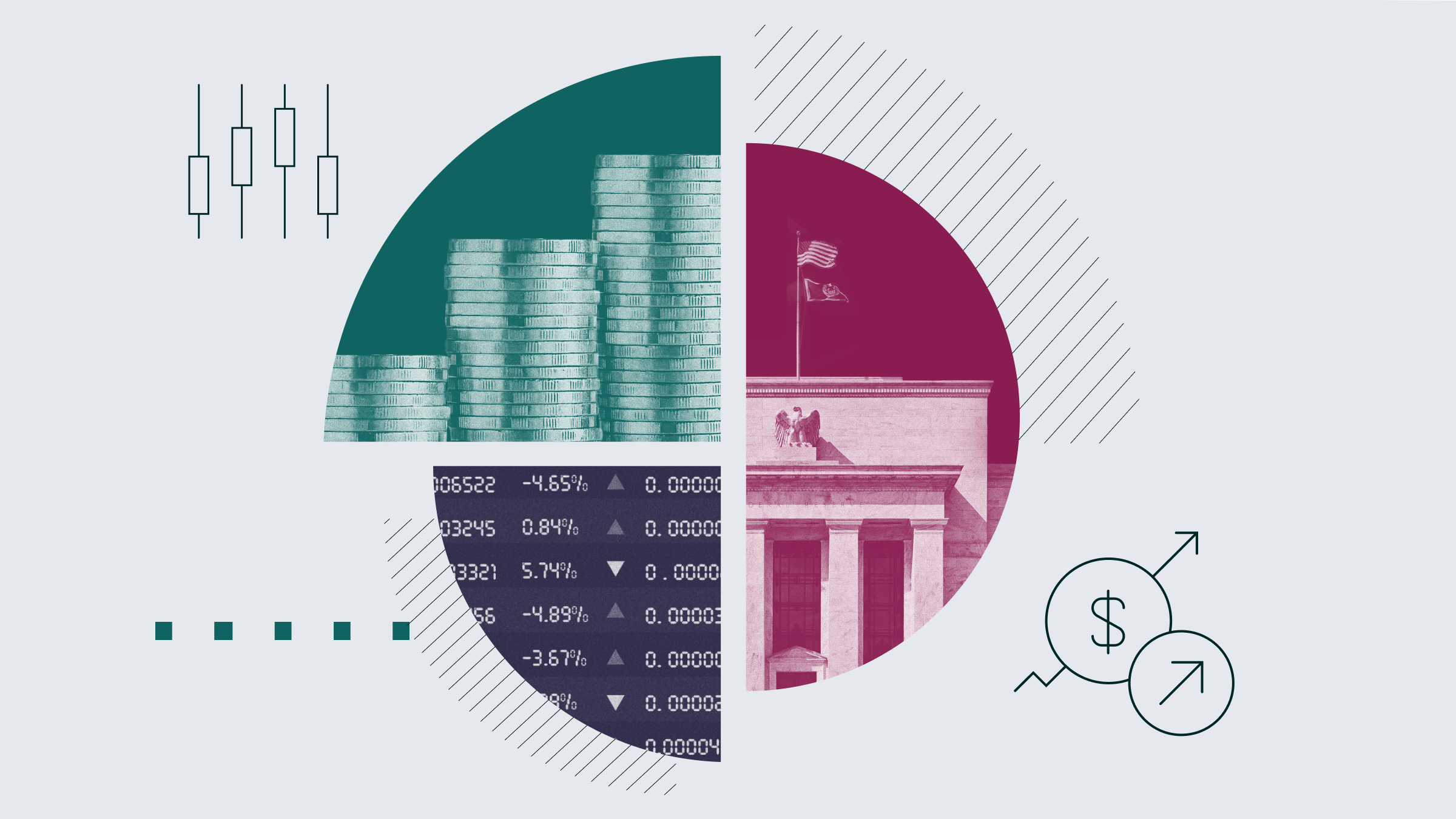Jason Stipp: I’m Jason Stipp for Morningstar. The employment market recovery coming out of the 2008 recession is undoubtedly sluggish, but the reasons might surprise you. Here with me to offer some perspective and insight is Morningstar’s Bob Johnson, our director of economic Analysis.
Bob, thanks for joining me.
Bob Johnson: Great to be here.
Stipp: You took a look at some historical rates of employment growth, and you also took a look at some recent recoveries. Let’s put the current employment growth, which is sluggish for a recovery, into some perspective.
Johnson: Sure. I think a lot of people have this assumption that we are just so far behind in employment growth this recovery, and the whole job machine is broken. But you look at some of the numbers out there right now, and the average, since 1950, employment growth has been 2.1%. That’s a year-over-year growth rate, and it's every year since 1950, and it’s averaged together, and that number is 2.1%. Right now, with the latest employment report, we’re running at 1.9%. So we’re not that far out of range.
Stipp: Also when you look at gross domestic product, there is a relationship between GDP growth and the employment growth that you see. And when looked at that way, it's also within a typical spread.
Johnson: Absolutely. ... if a typical GDP number might be 2.5% or so, and we’re running around 2.0%. Certainly we would expect with it running on the lower end of GDP, then we run on the lower end of employment. The relationships are kind of holding, if you will.
Stipp: To be fair, though, Bob, one of the reasons that people feel the employment market is sluggish is because this recovery has not been as robust as past recoveries in the employment market that we’ve seen after downturns. You looked into some of the reasons why. So how different has this recovery been and what are the factors behind it?
Johnson: Well, the biggest thing is, I’m hiding a little bit behind averages, but in all honesty, we lost 8.7 million jobs in the recession, but we haven't gotten nearly all of them back yet. I mean, retail sales are above what it was at the start. GDP is about where we were at the start of the recession. Employment still is at least a couple of million people short. That’s why people feel bad.
Stipp: What are some of the drivers of it? Because it’s not necessarily what people expect.
Johnson: Yes. I think that’s what’s really fascinating. I went through and looked at the last three recoveries and said how fast did we grow in those recoveries in every job sector out there? And how did we grow this time around? What might you guess would have been the worst-performing sector in terms of employment?
Stipp: Well, manufacturing has, obviously, suffered a lot because of changes that we’ve seen in the manufacturing dynamic here. So you wouldn't expect that manufacturing would be one of the leaders coming out of the recession.
Johnson: And as you kind of guessed, it is indeed one of the best-performing sectors. In fact, the manufacturing sector has outperformed in all three of the recoveries, and not by a little bit. So manufacturing has been one area of surprising strength. It was one area of strong weakness [in the downturn], but it was also one that we've actually had a positive versus the averages.
Stipp: So what are the laggards then?
Johnson: Well, the laggard is really government, the big one. Government has been a huge laggard, and excluding a couple of months when they hired U.S. Census workers, since 2009, or four years, government employment has been on a downturn between a combination of state, local, and federal government numbers. I don't see the prognosis getting necessarily a lot better in that government number. That's been the single biggest factor holding back the recovery.
Stipp: Another laggard has been education and health care, which seems a little bit surprising. Why do you think we haven't seen the strength there that we’ve seen in past recoveries?
Johnson: Yes, and I want to stress that in those categories what’s really affecting it is, growth hasn't been as strong as it has been. It’s not an outright decline like it is in the government sector.
In health care, I think a lot of what's happened is with higher co-pays, the vicious circle thing, the employment’s been a little bit weak. So that's kept people from getting health care, and less [employers] are offering health care. So people have spent less. Believe it or not, kind of right before our eyes, we’ve bent the curve on health-care spending growth. I mean, it used to be inflation plus 3%. Now it's maybe inflation plus 1% or 2%. So it has backed off in the last few years, and that showed up there.
I think employment in the education sector is a little bit more mixed. You've got to be careful. Grade school and high school teachers are counted in the government numbers. It’s college professors, private education, training all that kind of stuff that's in the employment number. It probably had a better [performance] in the early recovery, and now has kind of, as everybody has gone back and found work, started to drift off as people begin to evaluate, "Wait now, what should I be spending on?"
Stipp: There is another factor at work in this particular recovery maybe versus some others, which is the efficiencies that we’ve seen in the economy. So manufacturing, for example, might have been even stronger, but it seems that they can do more with less.
Johnson: Yes. The manufacturing industry is really great because they give us all the data to look at. In a lot of the other industries it’d be impossible to track this down. But right now auto sales are about 92% of their last peak. We are almost back to what we’d call normal right now. Employment, though, in the auto industry is only at 70% of normal. So we've become incredibly efficient. A part of that is some of the contracts that were abrogated, obviously, in the auto bail-out situation and restructuring of how that industry worked. And boy, it’s sure a lot more efficient than it used to be. Those are some pretty incredible numbers.
Stipp: But we don't see as much employment in those industries as maybe we had seen before, the kind of growth that we would get, even though we saw growth, but maybe not as strong as before.
Johnson: Unfortunately, that's why we've seen the data so clearly that the S&P earnings are doing wonderfully and employment not so much.
Stipp: We had a big adjustment in the downturn in the manufacturing sector, so we lost a lot of jobs there. The growth of manufacturing coming out of it hasn't been one of the laggards. It's actually been one of the leaders, though it could have some headwinds.
Any changes, though, to those trends? So, first, might we see any other big adjustments and another downturn in any industries because of secular issues going on there?
And these growth trends of government declining, and health care also having some headwinds, will we see any reversal there?
Johnson: Yes. Let’s go through those one by one. I think health-care employment--again, I'm kind of waiting for it to come, and we all don't know what’s going to happen, but we are bringing about 20 million to 30 million more people with insurance come the first of the year. And maybe they don’t actually end up with it the first day or whatever, but that's a lot of people to add to the health-care system. If they all started calling up their doctors Jan. 1 and asking for appointments, we don’t have enough people out there to do that. So I would suspect that the health-care pause that we’ve had really begins to pick up, unless they mess up the implementation of Obamacare in the next six to nine months. So I think that one is going to get better. That one is definitely going to get better.
Stipp: What about government? Any bright spots at all on government?
Johnson: The federal government--all the numbers I cited are presequester. I mean, that's kind of yet to happen. So that's certainly bad news, and certainly government has become, with a little bit of a lag, more efficient. I mean, I think they’ve learned to use the computers and do online car registrations and things that maybe they never would have done before. Toll taking, they all have electronic toll tags these days. These are all things that are still kind of working their way through the system, and I am afraid there is more to come there. As we talked about earlier, there is this whole shift going on. Government is probably spending as much, but they’re not hiring as many because it’s going to pensions and other costs and not so much employees.
Stipp: Any other sectors of the employment market that you think are at risk for a big type of secular adjustment like we saw in manufacturing in the last downturn?
Johnson: I don't think any of them is big enough to make as big a difference as housing did across so many industries, but I still think probably the financial-services sector is at a little bit of risk. I think we still have a lot of banks with tellers, and I think [companies] have certainly streamlined some of that. But it still seems to me--I've said this for years, though, to be honest--but we’ve got more banks and more tellers than we really need. So I think the financials sector is still probably a little bit overstaffed, but I think that’s going to be a slow adjustment.
You’ve got dying industries, like the paper industry, that will continue to be an ongoing drag.
I think maybe we've had the peak in some of what’s going to happen with cell phones and smartphones. All these people used to staff up a cellular-phone store on every corner is probably done, and I think we’re still probably losing repair people who go out to the home to fix things because we have less to fix.
Stipp: Bob. Well, a very interesting perspective and some interesting conclusions about the nature of our most recent employment recovery versus others. Thanks for joining me today.
Johnson: Thank you.
Stipp: For Morningstar, I’m Jason Stipp. Thanks for watching.

















